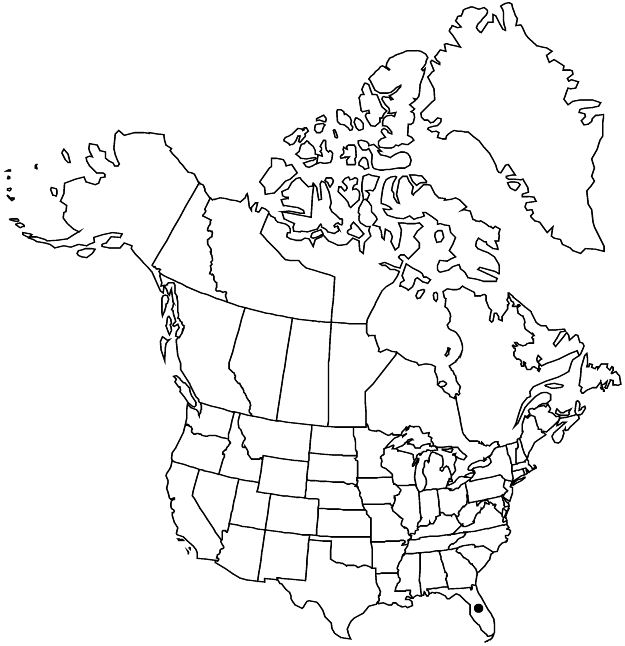Talipariti tiliaceum
Contr. Univ. Michigan Herb. 23: 258. 2001.
Trees 3–8 m. Leaves: petiole commonly subequal to blade, with pubescence like stem; stipules sessile, oblong-lanceolate, 15–40 × 8–14 mm; blade discolorous, palmately 7–9-veined, mostly 6–13 cm, coriaceous, apex short-acuminate, surfaces minutely and densely stellate-hairy or nearly glabrous abaxially. Inflorescences: flowers sometimes aggregated distally with reduced leaves; involucel cupuliform. Pedicels minutely stellate-hairy; involucellar bractlets connate. Flowers: calyx deeply divided, 1.5–2 cm, lobes not gland-dotted, densely stellate-hairy, with nectary on each midrib; staminal column pallid, apically 5-dentate, glabrous; style emergent from staminal column; stigmas 5. Capsules 5-locular, 1.5–2 × 1.5–2 cm, subequal to calyx, antrorsely hairy, hairs yellowish or brownish. Seeds 4 mm, minutely papillate.
Distribution

Introduced; Fla., Mexico, West Indies, Central America, South America, Asia.
Discussion
Varieties 2 (2 in the flora).
Selected References
None.
Key
| 1 | Corollas yellow with prominent red center; stipule scars nearly straight or slightly curved; epidermis of involucel and stipules visible through pubescence. | Talipariti tiliaceum var. tiliaceum |
| 1 | Corollas yellow without red center; stipule scars markedly curved; epidermis of involucel and stipules obscured by pubescence. | Talipariti tiliaceum var. pernambucense |